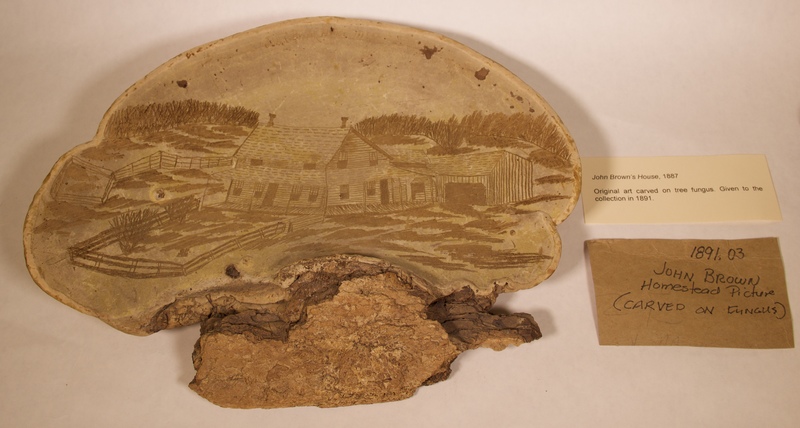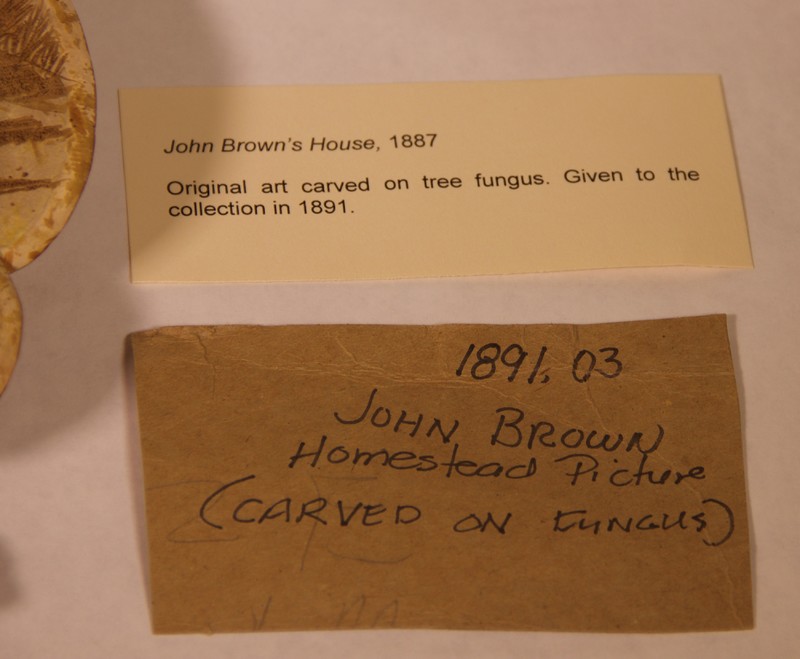John Brown Homestead Carving
This item is an original carving of the John Brown homestead. Carved in 1887 by an unknown artist about 28 years after his death, it was most likely created to preserve his narrative and memorialize his home. Brown was a public figure and there were people who wanted to remember his name; so it is not a surprise that there are pieces representing his home. The minimalist design and rough texture gives the piece a unique feeling that is hard to place.
This particular fungus is called ‘artists conk’ due to its popular appeal as a natural canvas, but goes by the scientific name of Ganoderma applanatum. The art is created by etching with a knife or sharp tool into a large piece of the fresh tree fungus, the fungus then hardens within a few days and can keep the art preserved for decades if cared for properly. Although, being organic, it is very easy to taint or destroy what is carved into the face of the fungus. (Artists Conk 2012)
The work here is in very good condition and is over one hundred and thirty years old which stands as testament to The Henry Sheldon Museum for taking incredible care of the delicate art. The work was kept privately for 3-4 years before being presented to Henry Sheldon for his collection in 1891. Other than this, very little is known about the origin and history of the item. But it spent the overwhelming majority of its time with the rest of Sheldon’s idiosyncradic collection. This carving, despite being small and fairly simple, carries an important piece of history with it. That being the story of John Brown.

